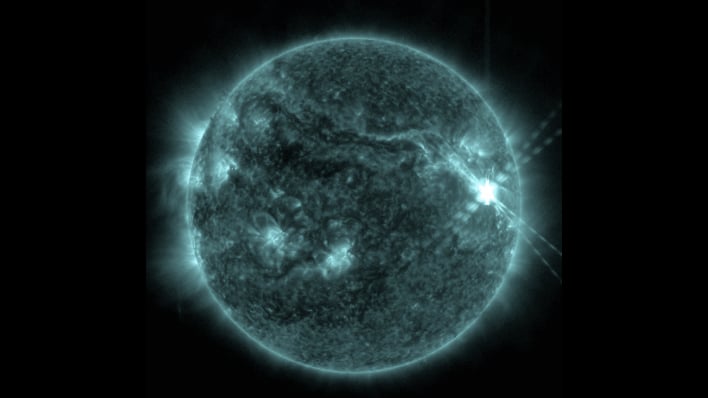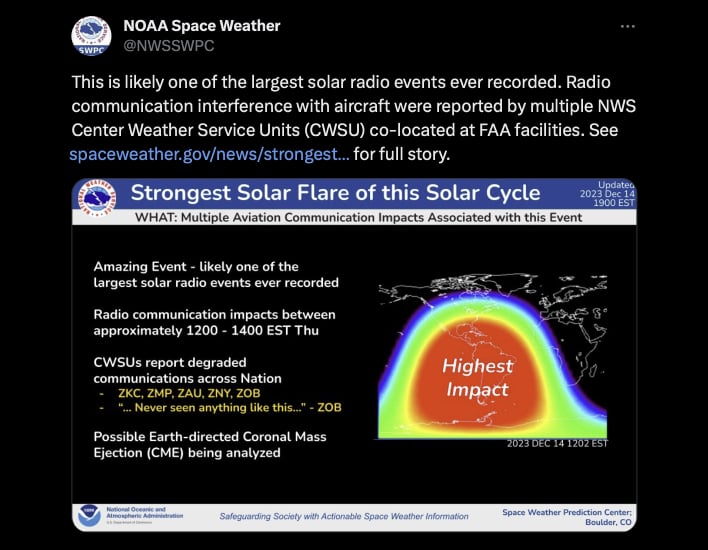Angry Sun Erupts Strongest X-Class Solar Flare In Years Knocking Out Radio Comms

According to reports, the explosion more than likely caused a fast-moving coronal mass ejection (CME). A CME is a solar phenomenon that can project billions of tons of particles into space and reach Earth in as little as a day. When directed at Earth, CMEs can cause space weather events known as geomagnetic storms, which can degrade communication signals, cause unexpected electrical surges in power grids, and produce aurora at higher latitudes.
The X2.8 flare emitted on December 14, 2023, was the strongest flare of Solar Cycle 25 to this point. It is also the most powerful eruption the Sun has emitted since what SpaceWeather.com refers to as “the great storms of Sept. 2017.”
The radiation from the flare has already caused a shortwave radio blackout over North and South America, with Ham radio operators possibly noticing a loss of signal at all frequencies below 30MHz for more than 30 minutes after the flare occurred. Shortly after the blast, the US Air Force reported a Type II solar radio burst, which typically originates from the leading edge of a CME.
A Lancaster University study recently published provides another possibility to be aware of during these immense solar flare events. The study found that solar storms of this nature could also cause errors on railways, and switching train signals from red to green in “the worst case scenario.”
Reports indicate that while the solar event is not “squarely aimed at Earth,” it is likely that it will still have an Earth-directed component. The latest indication is that there will be a glancing blow likely on December 17, 2023.


